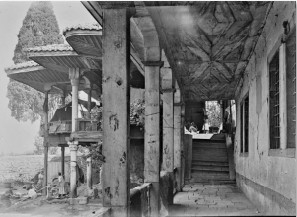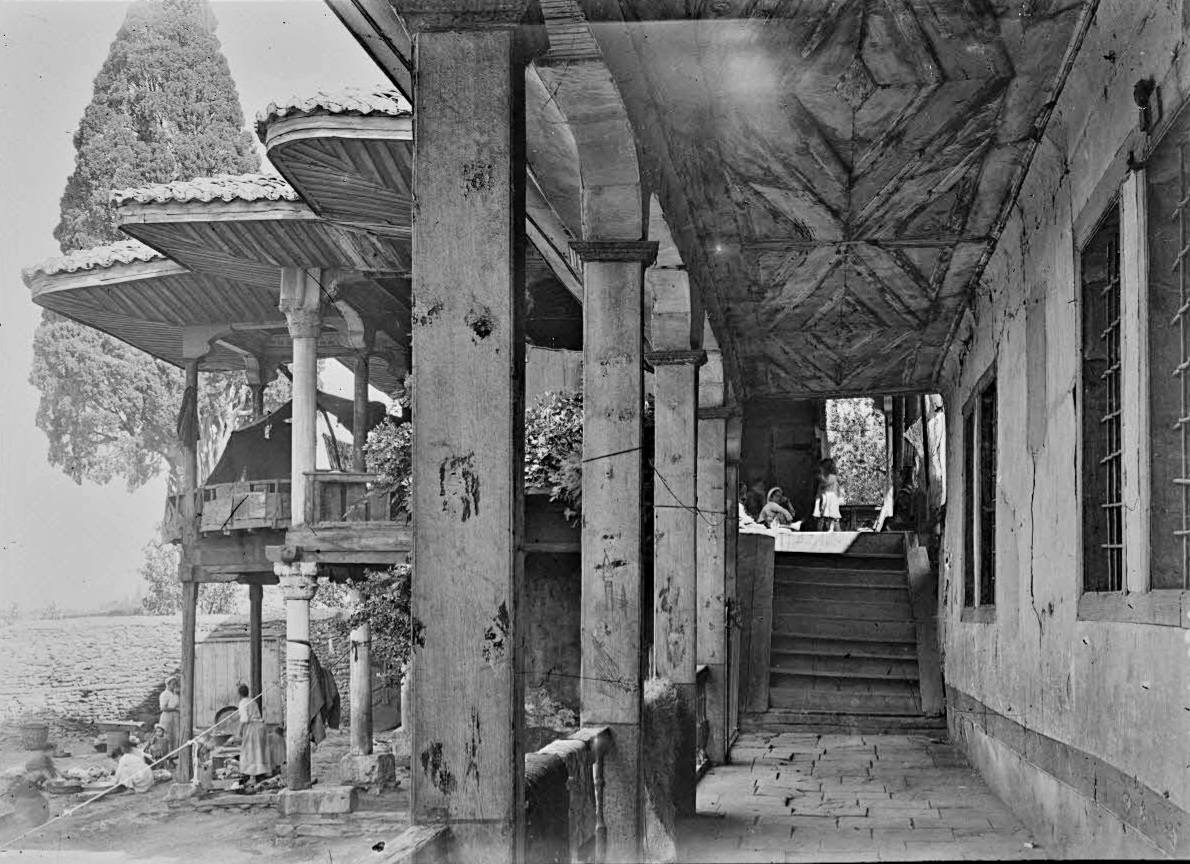
Title
The Mevlevi Hane tekkeh in Thessaloniki, in photographs from 1917-1918.
Description
The term tekke comes from the Turkish word tekke, which is a rendering of the Arabic word takiya, which translates as "place for support" or "place for rest". Hane means home. The Mevlevi Hane was the gathering place, called a monastery, of the Mevlevi dervishes. It was located outside the northwestern walls, where the then Yeni Kapi Street, today's St. Demetrios Street, began, east of Lagada Street, in the present-day area of Panagia Faneromeni. In its place today there is the 59th and 61st primary school. The now lost tepee was the most famous and richest Mevlevi monastery in the Ottoman Empire and the only one in the wider region of the southeastern Balkans. The monastery was built in 1615, by Ekmekji Ahmed Pasha and included a mosque, a medrese (training school), dormitories, a fountain and a cemetery. The revolving dervishes were wiped out by Mustafa Kemal Atatürk between 1923-1930 and the Young Turks who hated anything religious and mystical. He imprisoned them, disbanded their orders and emptied their monasteries. The Mevlevi Hane was demolished in 1925-27 and school complexes were built in its place.
Contributor
Pasvantis Stefanos
Format
License
Geographical Coverage
Time Coverage
Digitization Date
Unknown
Subject
Religion
Rights Holder
Society for Macedonian Studies

